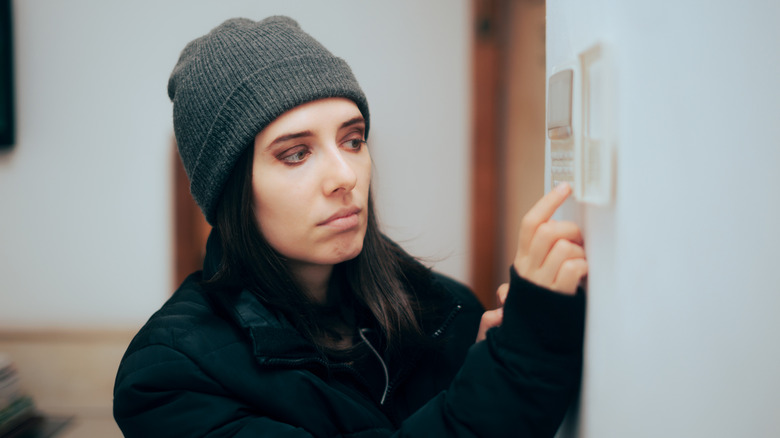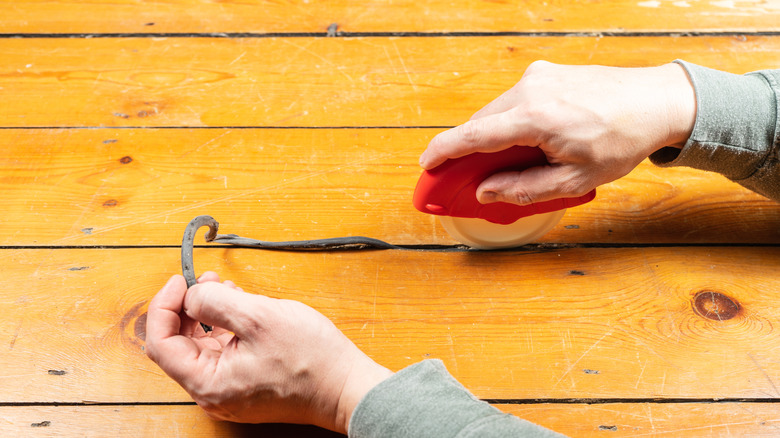Beware! Keeping Your Home Too Cold In The Winter Could Cause Serious Issues
It's common during the winter for people to try and keep their heating bills lower by turning the thermostat way down, hoping to save a few dollars. Unfortunately, that temporary cost savings can lead to potential long-term property damage and put undue stress on your heating system. You might feel comfortable while cozying up under a blanket, but your home's air is getting too cold, especially when the indoor temperature falls below the recommended minimum of 60 degrees Fahrenheit, creating a harsh environment. Letting your home's temperature drop too low is a risk that affects every component in the house, from plumbing to woodwork, and even the plants sitting in the window.
Ignoring the thermostat during the coldest months not only creates an uncomfortable living situation, but it also compromises the structure of your home. Nobody wants to pay a bank account-busting repair bill for a flooded basement or the cost of replacing a furnace, but those are some situations you may find yourself in if you sacrifice warmth for lower heating costs. Turning down the heat might seem like a smart move in the short term, but the cost of a cold home outweighs the price of keeping the furnace at a comfortable temperature. Instead of drastically turning down the heat, follow some tips to help you save energy this winter and understand how keeping the house too cold affects heating systems and energy efficiency.
Keeping the house too cold causes property damage
The biggest concern for any homeowner during a cold snap involves the plumbing. Pipes near exterior walls, in crawl spaces, or in spots that don't have enough insulation are susceptible to freezing when the temperature of a home is kept too low. As water freezes, it expands, causing the pipes to crack or burst, which leads to water damage throughout the home when the ice thaws. One of the ways to prevent your pipes from freezing is to keep the house at a steady, warm temperature, especially overnight.
Moisture accumulation is another issue in colder homes. When warm, humid air (created by cooking or showering) comes into contact with cold walls, condensation forms on the surface. That moisture encourages mold and mildew growth, which is a problem that can be expensive to remediate. Even caulk around windows and doors can shrink and crack, which allows moisture to sink into the walls. Houseplants also suffer in a colder environment. Most indoor plants need the temperature to stay above 50 degrees Fahrenheit, and even hardy plants like the pothos can suffer cold shock indoors if the temperature drops too low.
How a cold environment affects heating systems and energy efficiency
When a home's temperature dips too low, the cold can affect how furnaces and heat pumps operate. They will struggle to raise the temperature when needed, and instead of maintaining a comfortable baseline, the system is forced to run at maximum capacity for long periods of time. This strain increases the wear and tear on the unit, which can shorten the lifespan, requiring a replacement much sooner than expected.
A constantly cold interior also highlights where heat is escaping, a phenomenon known as thermal bridging. This happens when warm air flows out through less-insulated areas, like wood framing or studs in the walls. These poor seals and cold spots mean wasted energy, since the furnace will run more often to replace the heat that is leaking out, regardless of how low the thermostat is set.
Certain types of materials used in a home are vulnerable to the cold air combined with the dryness created by running the heat. Wood, specifically flooring, trim, furniture, and cabinets, are susceptible to temperature and humidity swings. Excessively dry and cold conditions cause the wood to contract, which can cause gaps in floorboards, cracking on the surface of pieces of furniture, and even warping of moldings and woodwork. Considering all the potential issues that can happen when living in a cold home, it's worthwhile to look into how to prep your home for cold weather so you can keep cozy all season long.


